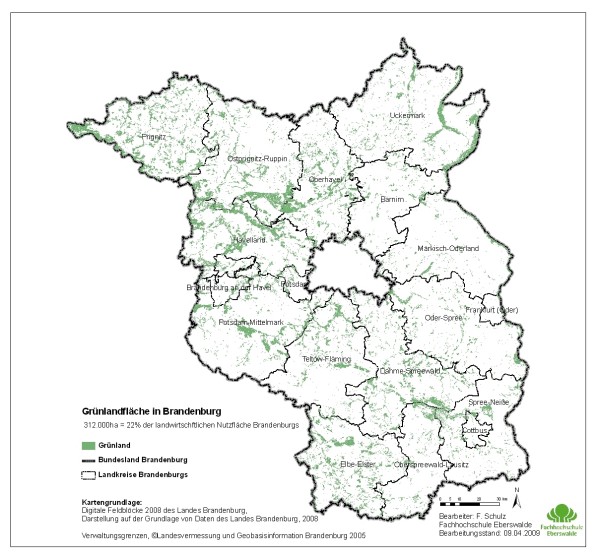Biomass potential of grassland
Development of GIS-based method of biomass analyses of grassland
Decreasing live stock connected with increasing lactating capacity leads to an excess of grassland area. Additionally the area which can be cultivated with energy plants is limited. Therefore, the use of grassland yield for bioenergy in areas which are not needed for feeding any more is getting more important. Hence, the usage for bioenergy can help to preserve the grassland area and to save the farmers' income.
However, the biomass yield model, developed at the University of Applied Sciences Eberswalde, applicated for arable land can be completed by a module for grassland. Thus, regionally differentiated assessments of potentials of bioenergy for different grassland usages will be done. Therefore, criteria of sustainability have to be implemented in order to avoid negative effects on the actual extensively used grasslands in Brandenburg.
Methods
- calculation of grassland excess: based upon statistics of live stock and demand of food
- determination of grassland yield potential: considering site conditions (soil types, water availability) and intensity of utilization (cut and pasture frequency and date, fertilization)
- development of a grassland yield matrix: considering site conditions, protection area regulations and different intensities of utilization
- determination of sustainability criteria considering consequences of actual and potential intensity of grassland utilization
Data input
geodata:
- geographic distribution of grassland
- hydromorphology
- soil type
- status of protected areas
- precipitation
statistical data:
- live-stock
- yield and acreage of grassland











